Sharlyn J. Lauby's Blog, page 14
December 17, 2024
How to Prepare for HR Compliance in 2025
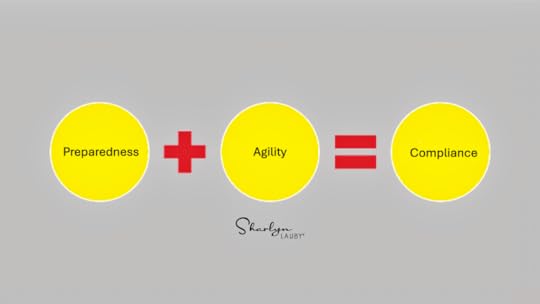
Estimated reading time: 3 minutes
After every election, there’s a period where the news is very focused on what’s going to happen in the new administration. Even when the current president is reelected. And especially when the current president is not. The conversation isn’t just focused on what’s going to happen but when will it happen and how.
It’s always interesting to see what people have to say leading up to a transition. I recently listened to a webcast featuring five employment lawyers talking about what they expect to happen with HR compliance next year and some things HR professionals might want to consider. The panel of legal professionals included:
Eric B. Meyer, Pierson Ferdinand LLP
Dessi Day, Pierson Ferdinand LLP
Amy Epstein Gluck, Pierson Ferdinand LLP
Jon Hyman, Wickens Herzer Panza
Daniel Schwartz, Shipman & Goodwin LLP
This group is always so wonderful about sharing their expertise with the HR community. When you have a moment, check out what they have to say. I found the conversation very interesting. Here are some of my takeaways from the webcast.
Pay attention to government appointments. I know there are days when the last thing we want to do is think about the structure of government and who’s leading what committee, but who’s in charge can have an impact on what gets done. This should not be a surprise – it happens in our companies all the time. The same applies to government – both at a federal, state, and local level.
Rolling back a law can be a challenge. In the past, we’ve seen government roll back / change laws. Organizations have decisions to make. Are we going to keep doing what we’re doing (even though it’s not a mandate any longer)? Or are we going to roll back? And if we decide to roll back, how are we going to do it? There are no clear answers and HR departments are going to want to think about how they plan to approach these HR compliance matters if and when they occur.
Plan for employee handbook and policy reviews. We say that HR departments should regularly review their handbooks as well as policies to make sure they’re current. If your organization doesn’t have this on their calendar, it might be a good idea to add it. That way if laws do change, you know exactly what aspect of HR compliance it impacts. The last thing the organization wants to do is give employees a handbook with outdated information.
While we don’t know what the future holds, I did find the topics covered by the panel to be realistic. They talked about potential changes within the Equal Employment Opportunity Commission (EEOC) and the National Labor Relations Board (NLRB). They also discussed what the future might hold for subjects like non-compete rules, artificial intelligence, and employee wages. Again, when you have a moment, the webcast is worth checking out.
As organizations are getting ready for the new year, talking about how they plan to handle HR compliance should be a part of the conversation. It could be helpful to bring your legal counsel into the discussion. They might have some recommendations on proactive steps HR departments should consider. One thing we know for sure, organizations are going to look to HR to help guide them through any changes.
The post How to Prepare for HR Compliance in 2025 appeared first on hr bartender.
December 15, 2024
10 Ways to Be Productive During the Last Two Weeks of the Year

Estimated reading time: 5 minutes
I’ve noticed that in a few of my recent articles I mentioned projects that might be perfect for the end of the year. So, I thought today might be a good time to expand on the idea and share ways to be productive during the last two weeks of the year.
Before I became a consultant, I often worked during the final two weeks of the year. At first, it was because I had to. My colleagues had more seniority and vacation time. Later, I did it because I wanted to. The final two weeks of the year were quiet. Less email. Fewer meetings. I could catch up and cross off a few things on my “to-do” list. Even now, when I have more flexibility with my schedule, the last two weeks of the year are a great time to do some projects I never seem to find time for.
If you’re looking at your schedule and are unhappy about having to work while your colleagues are taking time off, let me share a few things you can do to prepare for the upcoming year. I realize it’s not the same as taking time off, but the sense of accomplishment could be wonderful. In fact, you might want to consider bookmarking this page and using it as an end-of-the-year checklist.
Clean out your professional contacts. Sometimes our contact list has people on it with outdated information who haven’t stayed in touch. That digital entry is just taking up space. If you want, reach out and try to connect with those individuals via LinkedIn. Then you will always have their most current contact information.Update your social media accounts. Speaking of cleaning up contacts, use this quiet time to unfriend, unfollow, unlike, etc. those accounts and social media platforms that don’t bring value. You might also want to sign up for some new platforms like Bluesky. While you’re at it, take a moment to update your profile, photo, and contact information. The more accurate and current your profiles are, the more people will want to engage with you.Delete electronic files that you no longer need. A word of caution here – please check with your legal counsel and/or technology department before doing this. But my guess is the company’s 1986 dress code policy that is still sitting on someone’s computer could be deleted. Organizing your electronic files will make you more productive. Organize your reading. I don’t know about you, but I find that during the year, I add sites to my Feedly reader or my bookmarks only to later discover they’ve been outdated or abandoned. So, it’s good to clean out those electronic newsletters, sites, and blogs to make room for new ones. Hopefully you’ll continue receiving HR Bartender!Clean and dust your office. This is another area that I’m guilty of neglecting. Books get dusty. Computer cords get tangled. Take a couple of hours to move stuff and really clean. You’ll be amazed how good it feels (and smells!)Get your planner ready for the New Year. While I have a digital calendar, I still like using a paper planner. There are many different styles available, and they can serve multiple functions like planning, goal setting, journaling, etc. This year I’m using a Hobonichi Techo. Planning is an important activity that helps us stay focused and accomplish our goals. Find a highly productive system that works for you.Do a mini-HR audit. Pull a half dozen personnel files and make sure they look the way they’re supposed to. You can do the same with Form I-9. It’s better to have some sense of how your files look before an official audit. Need an audit checklist? The SHRM Knowledge Center can help you with that – members are able to request information for free!Talk with employees. I know that much of what we’ve discussed so far is about cleaning and organizing. Remember management by walking around (MBWA)? This is also a great time of year to get out of your office and talk with employees. Find out what’s going on. And if you have team members who will also be working, this could be a great time to schedule an extra one-on-one to wrap up the year and talk about future plans. Schedule one-on-ones with managers. Speaking of meetings, use the last two weeks of the year to meet with the managers who are also working. Talk with them about how HR can help and provide value. Plan some strategies together. Relationship building is a huge part of HR’s job. Here’s a great opportunity.Take a class. Been trying to find a few hours for your own professional development? I know how hard it can be to squeeze more productive time into an already busy schedule. Use the quiet time to listen to a podcast, webinar, and/or take a MOOC (massive open online course).Oh, one more project. If you’ve been putting off updating your passwords, now could be a good time to get it done. Cybersecurity is important.
While we’d all like to spend the last couple weeks of the year on a tropical paradise, sometimes it’s simply not possible. So, if your plans involve work, use the time to your advantage. You can start the new year ready to be productive and make a huge impact.
Image captured by Sharlyn Lauby while exploring the streets of Boston, MA
The post 10 Ways to Be Productive During the Last Two Weeks of the Year appeared first on hr bartender.
December 12, 2024
How to Improve Performance Results at Work
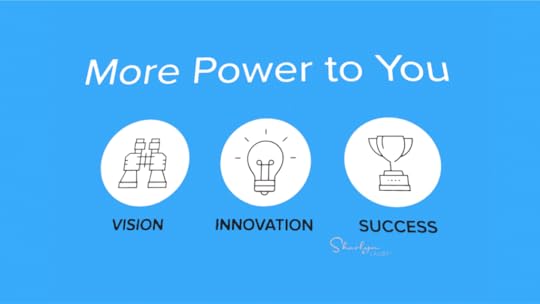
Estimated reading time: 3 minutes
I think it’s a given that organizations want employees to perform at a high level. But do employees feel the same? I’m sure there are some who might think otherwise, but I’d like to believe that employees want to perform well too. No one wants to have a reputation for not doing a good job. Most people want to be known for delivering results.
But delivering results doesn’t just happen. We have to work at it. Here are seven things that can help us achieve better performance results at work:
Set challenging but achievable goals. I like to think of goals as “the object of a person’s effort”. This means that goals are an important part of results. Goals don’t have to be big, but they do need to be challenging. Our goals should push us a little bit. That “push” could be in terms of work quality, work quantity, or the speed we get the work done.Look for supporters at every level of the organization. Once we know our goals, we need to find people who will support us – both in terms of providing resources as well as motivational support. Obviously, we want our manager to support us. Other individuals that might support and guide us include our co-workers and possibly even our vendor partners.Get organized. If you’ve ever been distracted by pictures of cute lemurs on the internet, then you know we can spend a lot of time, energy, and resources on the wrong things. If we want to deliver excellent work, we need to use our resources wisely. Employees should have a plan and a reasonable timeline for completing their work.Allocate resources. Employees should ask themselves, “What resources do I have? What additional resources can I get?” This also ties back to point #2 about looking for supporters. Is it possible that you’ll need to ask a supporter to share resources? This could also link with point #1 in terms of accomplishing a goal with limited resources. Use technology strategically. One of the resources that can help us achieve better results is technology. However, for technology to be highly effective, employees need to know what technology they have access to and how that technology works. Sometimes organizations aren’t using technology to its fullest capabilities which has an impact on results. Monitor progress regularly. Once we start the work, we need to monitor results. If we’re working on a big project, there could be defined milestones with identifiable times to monitor progress. When it comes to our everyday work, we could take few minutes at the end of our day to simply review what we’ve done toward accomplishing our goals. Small steps can quickly turn into big results.Celebrate success. Personally, I think sometimes we sell ourselves short by not celebrating what we’ve done. We put it into the category of “we did our job” so that’s not worth celebration. Let me offer one way to view this: if you’re setting challenging goals, collaborating with others, staying organized by using resources wisely, levering technology, and regularly reviewing your progress…then even if you’re “doing your job”, it’s worth celebration. Because it’s hard work.Doing our best work isn’t always easy. Maintaining high performance isn’t easy either. But there are a few things we can do to maintain high performance and achieve our professional goals.
Image captured by Sharlyn Lauby while exploring the streets of Barcelona, Spain
The post How to Improve Performance Results at Work appeared first on hr bartender.
December 10, 2024
Step-By-Step: Having a Performance Conversation with an Employee
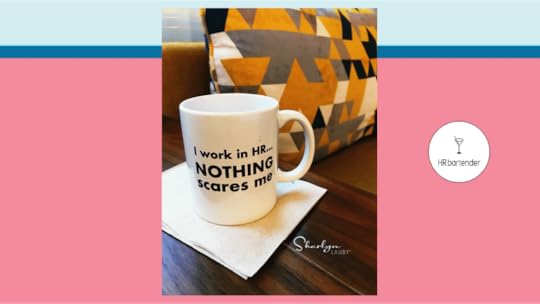
Estimated reading time: 4 minutes
Managers – here’s a scenario you might be facing (or have faced in the past). You’ve got an employee who isn’t contributing their fair share. You know you need to address it. The rest of the team can tell this employee is a poor performer. If you don’t do something, your credibility will suffer. But what do you say?
The purpose of conversations like this isn’t to punish or discipline the employee. It’s to change their performance. That’s why you don’t want to delay the conversation. The longer you wait, the harder the conversation. Because the employee will think their behavior is acceptable since no one addressed it.
Here’s an outline you can use as you think about the conversation you want to have with the employee. Again, we’re not talking about situations where employees need to receive disciplinary action. Your organization has a policy in place for that – and if you have questions about discipline, you should address them with someone on the HR team. Think of these steps as a coaching conversation.
Let the employee know your concern. Don’t minimize the importance of this conversation by spending a lot of time talking about the latest season of Only Murders in the Building and just a little on the topic of performance. This is an important matter and should be treated that way.Share what you have observed. Offer specifics about actual behaviors you’ve witnessed. If someone else witnessed the behaviors, try to have that person there. Employees don’t like the line “someone told me you did this…” If you’re trying to correct behavior, be able to specifically discuss behavior.Explain how their behavior impacts the team. Employees might not realize how their behavior negatively impacts the organization or the team. It’s important to draw a connection between their behavior and impact to the company. If negative impact can’t be explained, then an employee will question why they need to change their behavior.Tell them the expected behavior. It’s possible an employee will not know what they should be doing. Come to the discussion prepared to explain what the acceptable standard is and how an employee can achieve the standard. If an employee needs training or retraining, be prepared to suggest and support it. Solicit solutions from the employee on how to fix the situation. This is so important! Let the employee tell you what they’re going to do to fix the situation. They might suggest training (see #4 above). Bringing employees into the solution conversation creates buy-in. If you tell an employee what to do, they haven’t bought into it. Give the employee time to think about possible solutions.Convey the consequences. Let the employee know what will happen if the situation is not resolved. Sometimes the consequence is an employee will not be eligible for a transfer. Or they will not be able to participate in flex time. Maybe the next step is disciplinary action. Regardless, make sure the employee is aware of what happens if the matter isn’t resolved.Agree upon a follow-up date. No news is good news is not a management philosophy. After the employee agrees to work toward improving their performance, set a follow-up date to discuss progress. Express your confidence. Since the goal of this conversation is to improve performance, don’t be afraid to tell an employee you’re confident they can correct the situation.No one likes to have a negative performance conversation. I always try to remember the purpose – it’s to help an employee change their behavior. If the conversation stays focused on helping the employee be successful then hopefully it never escalates to disciplinary action.
Performance conversations can be a bit scary – both for the person giving them and the person receiving the feedback. Take time to plan out your thoughts. Think of the different responses that could arise and how you would answer them. Preparation will make the conversation easier.
P.S. Regarding step #7 above about follow-up. If after this conversation, an employee starts showing improvement, don’t cancel the follow-up meeting! This is a perfect time to acknowledge the work the employee has done. It’s also a perfect time to ask the employee to share how they made it happen. That story – about how an employee turned their performance around – could provide proven strategies that may be helpful in the future.
Image captured by Sharlyn Lauby while exploring the streets of San Francisco, CA
The post Step-By-Step: Having a Performance Conversation with an Employee appeared first on hr bartender.
December 8, 2024
The Difference Between Objectives, Goals, and Business Outcomes
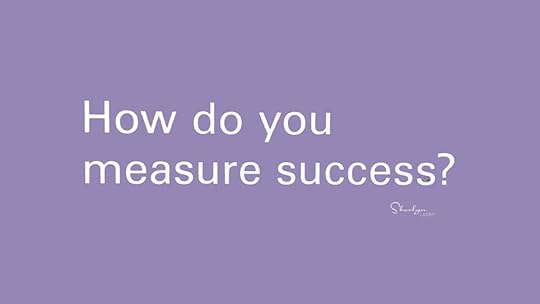
Estimated reading time: 3 minutes
I recently published an article about getting started with OKRs (objectives and key results). It occurred to me after sharing the article that we often use the terms goals and objectives interchangeably, when they really are different. At first glance, there might not be a big deal with using the words as synonyms. They’re all focused on achievement and results. But then, maybe it is important to differentiate them. Here are the definitions of each with an example:
Objectives are a specific result you’re trying to achieve within a time frame and with available resources. Think of them as the steps you will take to achieve the goal. An example of an organization’s objective might be to “Call all existing customers in Q3 with a special promotion to increase sales.”. For an individual, an objective might be to “Research all relevant HR certifications and register to earn one before the end of the year.”
Goals are an observable and measurable end result having one or more objectives to be achieved. Goals are typically broad in scope versus an objective which is very specific. For example, a goal might be for an organization to “increase profits”. Or an individual might have a goal to “become certified”.
Outcomes are the measurement and evaluation of an activity’s results against their intended or projected results. Outcomes are what you hope to achieve when you accomplish the goal. Using the above examples, the organization’s outcome might be to “increase profit by 50% over last quarter”. That’s what the organization is trying to do. For an individual, the outcome could be “get a new job” or “get a pay increase” as a result of earning a certification.
While I listed the definition to outcomes last, it seems to me that goals become more relevant if the organization is focused on business outcomes first. We spend a lot of time talking with employees about goals – and that’s good. But do we spend time talking with employees about outcomes? Do employees know how their goals not only align with the organization’s goals BUT also with business outcomes?
A key principle of employee engagement is that employees need to see how their work has value. This raises the question – is the “value” we’re talking about the company’s outcomes? Something to consider. I could see it being difficult for employees to understand their work and the value it brings when the organization doesn’t communicate business outcomes.
One of the reasons I was interested in the LinkedIn Learning session on OKRs and this conversation about objectives, goals, and outcomes is because for many organizations this is the time of year when we start conversations about next year’s goals and objectives. We start focusing on budgets. That includes talent management. So, what are the business outcomes for HR? And how can HR use those outcomes to create relevant and valuable goals for the department and HR employees?
I don’t know that I can completely answer these questions for your organization. But I do believe the questions are worth asking. Today’s business landscape is very competitive and that means HR departments will be asked to deliver at higher levels. The way to start creating a high performing HR function is by focusing on business outcomes.
Image captured by Sharlyn Lauby while exploring the streets of New Delhi, India
The post The Difference Between Objectives, Goals, and Business Outcomes appeared first on hr bartender.
December 5, 2024
Use MOCHA to Improve Organizational Accountability

Estimated reading time: 3 minutes
You’ve probably heard of the acronym RACI at some point. RACI stands for responsible, accountable, consult, and inform. It’s a way to establish organizational accountability by assigning who is “responsible” for doing the work, who is ultimately “accountable” for the outcome of a task, who are the subject matter experts to be “consulted” about the work, and finally, who should be regularly “informed” about the status of the work.
While I like RACI, there’s a similar acronym called MOCHA that I like just as much – if not more. Here’s what MOCHA represents:
Manager: Who handles the day to day management of the task or program? Someone has to be responsible for the work – whether that’s a task, process, program, etc. They handle the everyday decisions and coordinate the front-line activities associated with the job.
Owner: Who is the organizational owner or sponsor for this task or program? Depending upon the type of work we’re referring to, this person might be a senior leader who directs a department or division. Or maybe it’s someone that has a lot of influence in the organization, so we want them to be kept in the loop.
Consultant: Who advises the group or manager? This could be an internal or external subject matter expert. They might have a regular role or be someone who is called in to deal with a specific problem or obstacle.
Helper: Who are the people that the group or manager taps into for information or assistance? There are always people who help us accomplish our work. They might not be in our department. They might not be on our project team. But we need them for data, information, and sometimes just a supportive ear.
Approver: Who approves resources for the manager or group? This may or may not be the owner. The approver could be someone in purchasing or procurement. Or maybe they’re the CFO. We need both owners and approvers to be successful.
I think MOCHA is a refreshing take on the traditional RACI acronym. I particularly liked the addition of the “helper” category. I don’t know that organizations spend enough time thinking about the help they might need to accomplish a goal. Not only does this help the group focus on those resources but it provides a way for those “helpers” to be acknowledged for their contribution.
I originally heard about MOCHA from a participant in a training session. That’s the other thing that I liked about MOCHA – an organization took a concept like RACI and made it work for them. To me, that’s what best practices are all about. It’s not always about just copying what someone else is doing. It’s about saying, “I like that idea. How can I make it work for me or my organization?” New ideas are formed all the time.
Most importantly, whether you use RACI or MOCHA, the focus is still on establishing accountability for a task or program! This is so incredibly important. How many programs or projects fail because clear accountability isn’t established? As organizations are setting their goals for the upcoming year, it could make a lot of sense to use a tool like RACI or MOCHA to establish greater organizational accountability.
Images of MOCHA beverages captured by Sharlyn Lauby
The post Use MOCHA to Improve Organizational Accountability appeared first on hr bartender.
December 3, 2024
Bookmark This! New Hire Buddy Programs

Estimated reading time: 3 minutes
Hiring and retaining qualified employees is tough work. To do it well, it takes time and resources. The last thing that organizations want is to spend time and resources finding a great employee only to have them quit days, weeks, or even a few months later.
It reminds me of a survey I read from Korn Ferry a few years ago. 98% of executives surveyed said that onboarding programs were a key factor in employee retention. A great addition to the company’s onboarding process is a new hire buddy program.
I recently shared with you a series of articles about buddy programs. Today I wanted to bring all the articles together in one place for easy reference. I hope you’ll find it helpful and share it with your organization.
What’s a New Hire Buddy Program and 4 Reasons You Should Have One
We know that onboarding programs help new hires learn about their new role and get set-up for success. New hire buddy programs can help with conveying information and building relationships. And that’s not to say the organization (and the buddy) don’t reap any benefits from a buddy program. Like mentoring programs, not only does the mentee learn but the mentor does too. The new hire benefits from the program and so does the “buddy” – and the organization.
5 Things to Know Before Implementing a Buddy Program
Onboarding programs do two things: 1) welcome the new hire to the company and 2) provide the tools for the new hire to be successful. On some level, giving employees the tools they need to be productive on the job is straight-forward. On the other hand, while it might sound easy, the welcoming part might actually be more challenging. Companies need to decide what welcoming looks like.
3 Activities to Include in a New Hire Buddy Program
The role of a new hire buddy isn’t to replace the responsibilities of HR, training, or the employee’s supervisor. Rather, it’s to help the new hire with 1) acclimating to the work environment and 2) sharing informal information about the organization that’s probably not written down anywhere.
How to Evaluate the Success of Your New Hire Buddy Program
Measuring the results of your onboarding buddy program doesn’t have to be difficult or complex. But it does need to happen. Checking in with the key stakeholders allows organizations to make sure that everyone involved in the program is seeing the results they need. And using a combination of quantitative and qualitative methods translates into feedback that all groups will find valuable.
New hire buddy programs can be that extra activity that helps employees feel more connected to the organization and their work. I’m not just talking about the new hire. The person assigned the buddy role can learn and grow from the activity as well. And they can take those learnings to coworkers.
Organizations often have unwritten rules and traditions. I’m not criticizing the practice, just pointing out the reality. New hires need a way to learn about these unwritten practices to acclimate successfully. And let’s face it … a new hire might not want to go to their manager (or HR) to ask. A buddy can help a new employee learn about the unwritten rules. That has a tremendous amount of value.
Image captured by Sharlyn Lauby while grabbing a bubble tea at Kung Fu Tea in Gainesville, FL
The post Bookmark This! New Hire Buddy Programs appeared first on hr bartender.
November 26, 2024
7 Proven Activities to Grow Your Career Using Networking

Estimated reading time: 4 minutes
There’s an old saying that your career success is often based more on “who” you know versus “what” you know. While having knowledge and skills is important, building professional relationships (i.e. “networking”) can open doors to new career opportunities – both internally and externally.
From an internal perspective, many companies post open positions internally before going to the outside, turning to the power of their existing workforce’s networks. And externally, over half of jobs are filled by hearing about the opening from friends and/or professional networks.
But networking isn’t just for job seekers. Building and maintaining a professional network can help you build your confidence, boost your communication skills, market yourself or your business, and learn new things. That being said, networking can often conjure up images of awkward handshakes, forced icebreaker activities, and uncomfortable small talk.
So how do we develop networking skills to receive its value? Even if you’re not “a natural” at working the room, there are ways you can learn to do it effectively.
Building a professional network takes time so it’s important to think long-term when it comes to networking. I cannot begin to tell you how many times I’ve seen people ignore their network only to regret it later. Whether you consider yourself a master networker or just starting out, these seven steps are a must:
Maintain a professional and positive attitude. People who are most successful at networking have a positive, professional attitude that makes others want to know and connect with them. It should go without saying but let me say it anyway – avoid making negative comments about the event you’re at, your organization, or other people. This is likely could come across as unprofessional and drive potential connections away. Develop connections rather than transactions. There’s nothing wrong with attending a professional event with some networking goals in mind. But do try to also have some fun and enjoy your time. Networking isn’t supposed to be drudgery. Being too intentional about a goal to “meet XX people” or “make XX new contacts” can add unnecessary pressure.Be an active listener. Over 60% of business people consider being a good listener as the most important characteristic of a great networker. Listening makes others feel heard and will leave them with a great impression of you and the conversation. In addition, actively listening can help you engage in more genuine conversations.Build trust through authenticity. Speaking of genuine conversations, take time to establish trust with people. Being authentic will help build your credibility and keep you top of mind after the event. You can do this by actively listening (see #3), asking questions, finding something you may have in common, and possibly making suggestions or recommendations. Connect people with opportunities. As great as networking can be for your own professional development, it’s also an exciting opportunity to help others with theirs. Do your best to provide value to the new people you meet by facilitating introductions, sharing advice, offering feedback, or actively seeking ways you can help them. You’ll feel great knowing you’ve helped someone, and when an opportunity comes up for them to return the favor, it’s highly likely they will.Follow-up! Your actions will speak louder than words when it comes to networking. To be a truly great networker, you need to follow through on what you say you’ll do. This establishes your credibility. That means sending the link to an article you discussed or facilitating the introduction you promised to make. At the very least, make a positive impression by sending a LinkedIn connection request and/or message to your new contacts to thank them for their time or say that it was nice to meet them. Have fun! Not every networking opportunity will be valuable. You won’t always walk away with new LinkedIn connections, plans for coffee meetups, or on-the-spot job offers. While networking can help us get those things, it shouldn’t always be what you ‘get’ out of it. When all else fails, have fun conversations and be a good person. In the end, being (genuinely) kind will only add to your integrity.These networking skills can also be applied to our interactions on social media. Regardless of the platform you’re on, people want to engage with others who are professional, positive, authentic, and trustworthy.
Your networking skills will remain an effective tool to help open doors for you professionally throughout your career. You can use networking to learn more about the jobs and industry you’d like to work in, meet people who can connect you with those opportunities, and develop the communication skills, which will be vital for any future role.
Image captured by Sharlyn Lauby while exploring Duval Street in Key West, FL
The post 7 Proven Activities to Grow Your Career Using Networking appeared first on hr bartender.
November 24, 2024
7 Steps for Getting Started with OKRs
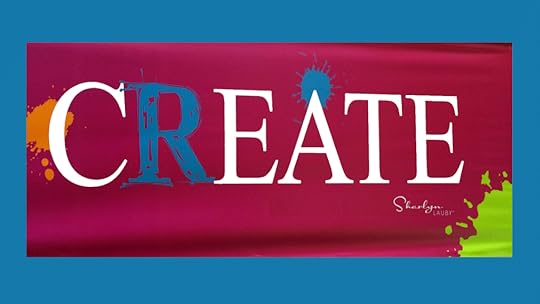
Estimated reading time: 4 minutes
OKRs are objectives and key results. It’s a way for organizations to set a goal and measure its progress toward success.
This is the time of year when organizations often talk about setting goals – whether it’s on a company level, department level, or individual level. But sometimes what they miss in goal setting is attaching a measurement or metric to identify that the goal was achieved.
For example, a company might say, “We need to increase profits.” Okay – then the question becomes by how much? The organization needs to reach consensus on an acceptable increase in advance. Otherwise, the organization will increase profits by 5% and someone will say, “I didn’t agree to that. It’s not enough.” This is confusing and frustrating.
So OKRs are a method for setting an objective and then identifying the key results for success. I recently listened to a LinkedIn Learning session on managing OKRs lead by Jessie Withers from the people development team at Google. What I liked about this session was it provided a great introduction to OKRs for those who aren’t familiar as well as a nice refresher for those who are. There was one area that really stood out for me, and it was focused on getting started with OKRs.
Identify and prioritize. Typically, when we set goals it’s to fix a problem or do something better. One of the challenges with goal setting is that we often set too many goals. Then we don’t have enough time and resources to accomplish them. So, identify those areas you want to focus on and then prioritize them. Everything does not have to be the priority. Start small. This ties into the previous step about prioritizing. Consider initially setting some OKRs that allow the organization to get comfortable with the process. This can be a boost for the organization and give them the confidence to start setting and managing larger goals. Focus on progress, not perfection. Sometimes OKRs are smaller milestones within larger goals. For instance, the organization might have a big goal to implement a technology solution. Within that big goal, are smaller goals related to data cleansing, policy development, etc. While we need to focus on the big goal … recognizing progress toward goal accomplishment is critical. Identify a single point of contact. If you’re implementing OKRs for the first time OR you feel the organization needs a refresh, having a single point of contact could be helpful. By single point of contact, I mean someone who can answer questions about developing OKRs – like a subject matter expert. This will bring consistency to the process.Be consistent. Speaking of consistency, OKRs work well when the organization is using them consistently. If every department is doing their own thing … well, it becomes difficult to measure results. And that’s the whole purpose of OKRs – results. Regularly review and revise. I view this step as two-fold: first, organizations should regularly review their OKR processes to make sure they are working well and being used consistently. Second, organizations should review the OKRs they’ve set for themselves and make sure they are good objectives with attainable key results. Communicate results. Organizations should let everyone know that the OKRs they’ve set are being accomplished. They should talk about how the process is working. Because if employees can see that the process is working, then they’ll be excited about using it.OKRs can help organizations identify the goals they want to accomplish and keep them focused on results. Having a consistent process for goal setting and measurement is the first step. Implementing an objectives and key results methodology does take time, so having a roadmap for getting started will help.
Image captured by Sharlyn Lauby while exploring the streets of Las Vegas, NV
The post 7 Steps for Getting Started with OKRs appeared first on hr bartender.
November 21, 2024
Make Your Training, Facilitation, and Presentations Relevant

Estimated reading time: 4 minutes
Lately I’ve been noticing people who are using the terms training, facilitating, and presenting interchangeably. And for the purposes of a conversation, it might be perfectly acceptable to use the terms in that way. I’ve done it myself. But when it comes to delivery, the terms are different, and the word choice could create audience expectations. For example, here are the definitions:
Training is the action of teaching a person a specific skill or type of behavior.
Facilitation is the act of helping other people to deal with a process or reach an agreement or solution without getting directly involved in the process, discussion, etc.
Presentation is an activity in which someone shows, describes, or explains something to a group of people.
Using these definitions, if I attend a facilitated session, I’d expect the facilitator to let the group drive the conversation. If I attend a training session, I expect activities and skill practices. And, if I attend a presentation, I expect something like a lecture. All three are valuable. That’s not the point. My view is that audiences make the decision to receive information a certain way and when the speaker doesn’t deliver the session in the way that was expected, well…it can be disappointing and possibly, ineffective.
In addition, all three of these delivery methods require pre-work. Training is best when a needs analysis is completed. Facilitation requires gathering information about the situation or issue to be discussed. And presentations should be researched. While it is possible to combine some of these methods, there are limitations. For example, when working on a presentation, it might be tempting to include some training type activities. But in many presentations, the speaker doesn’t have access to an audience analysis, a key piece of information in the training analysis.
One of the reasons I wanted to discuss these definitions is because I’ve noticed a lot of speakers moving toward this combination of training/presenting and I don’t think it’s as fluid as one might think. I totally understand the concept of entertaining education and that can happen in both training and presentations. What I’m talking about is the “Let’s do an activity!” during a presentation. There are three things to keep in mind:
Activities should be relevant. I understand that many people like interaction so putting an activity in a presentation is well-received. But the activity needs to have a point or takeaway. Now, let me be brutally honest here: I’ve never been part of a three-minute breakout discussion during a conference presentation that yielded an epiphany. Yes, it can be fun, but there’s never enough time allocated to make the conversation effective or relevant. Which leads to point number two …Activities always seems to take longer than expected. I’ve seen many conference sessions where the speaker asks the group to take 2 minutes to discuss something. Depending upon the size of the group, the two-minute activity becomes five or sometimes ten minutes. Primarily because the speaker has a hard time refocusing the group again. It’s easy to do this type of activity during a presentation with small groups. With large groups, it can get out of control. When you lose control of the group, you lose control of your session. I’ve seen speakers do an activity then rush through the rest of their session because their timing is off. So, the audience misses out on valuable information . . . because of an activity . . . that maybe wasn’t relevant in the first place. This can frustrate the audience because they were expecting just a presentation, and didn’t get it.Organizations keep telling employees they need to learn and stay current with their skills. Which is great! And employees are embracing the message. This means employees are not only going to place emphasis on the information they are learning but the methods that information is being shared. Because they have a learning goal, and the company is holding them accountable for accomplishing that goal. So, speakers need to be cognizant that training is truly interactive, facilitation is objective, and presentations accomplish certain goals.
That doesn’t mean training, facilitations, or presentations should be boring. It means that they need to be relevant and well-managed.
Image captured by Sharlyn Lauby while exploring the Kennedy Space Center before a launch
The post Make Your Training, Facilitation, and Presentations Relevant appeared first on hr bartender.
Sharlyn J. Lauby's Blog
- Sharlyn J. Lauby's profile
- 10 followers



